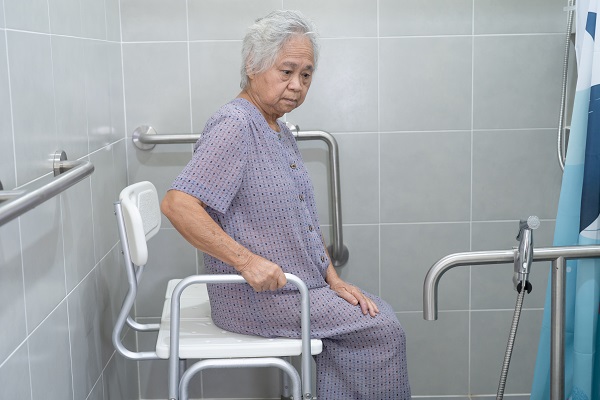Funding for bathroom aids: What is available for low income seniors who need to get aids for the washroom?
Primary tabs
What is available for low income seniors who need to get aids for the washroom?
Question
Our answer
Products mentioned in our answer below are provided to inform you about the types of technologies available and have not been evaluated by CanAssist. They may or may not be appropriate for your particular situation. Some technologies and devices may require an in-person assessment. Speak with your health care provider for additional information and support.
We understand getting new mobility equipment - like a cane, walker, or wheelchair - can be costly and challenging. In many cases, British Columbians may require financial support and guidance to purchase the assistive devices and products they need. First we will address the funding for a mobility aid, and then look at funding for washroom aids.
When purchasing washroom aids such as grab bars or bath transfer benches, a consultation with a regulated health professional, such as an occupational therapist (OT) or physiotherapist (PT), is recommended to ensure that the device is appropriate and safe for your family member and their environment. They can visit their doctor or local walk-in clinic to talk about getting a referral. In several Health Authorities family members of clients or clients themselves can refer themselves to Home and Community Care for an OT/PT assessment.
 Installing aids for a washroom, such as grab bars and non-slip mats, can support aging in place and make a huge difference in the safety of seniors living independently. These products and larger washroom adaptations can sometimes be costly, so governments and organizations are addressing that with funding programs. Below are some of the programs available to British Columbians.
Installing aids for a washroom, such as grab bars and non-slip mats, can support aging in place and make a huge difference in the safety of seniors living independently. These products and larger washroom adaptations can sometimes be costly, so governments and organizations are addressing that with funding programs. Below are some of the programs available to British Columbians.
The Home Renovation Tax Credit for Seniors and Persons with Disabilities is a tax credit provided by the BC government. Bathroom safety improvements, such as grab bars, are qualifying renovations. To be eligible you must be:
- A resident of B.C., and
- A senior or a family member living with a senior, or
- A person with a disability or a family member living with a person with a disability
Please note that the maximum amount of the credit is $1,000 (CDN) per tax year and is calculated as 10% of the qualifying renovation expense (maximum $10,000 (CDN) in expenses). The credit is a refundable tax credit, which means if the credit is higher than the taxes you owe, you’ll receive the difference as a refund. Qualifying adaptations include installing non-slip flooring and grab bars.
BC Rebate for Accessible Home Adaptations (BC RAHA) helps low- and middle-income households to complete home adaptations for accessibility. There are channels for both homeowners and renters to apply. The maximum total life time rebate is $17,500 (CDN). Eligible adaptations include the installation of grab bars in the washroom.
There are two funding channels through the Canada Mortgage and Housing Corporation (CMHC) for members of a First Nation to support home adaptations: Home Adaptations for Seniors’ Independence Program (HASI) and Residential Rehabilitation Assistance Program for Persons with Disabilities (RRAP-D). To apply contact the CMHC team in BC by emailing bcinhs@cmhc-schl.gc.ca.
BC Rehab Foundation offers funding to individuals for equipment including assistive technologies.
Labatt Better Together provides direct funding to individuals or families who are in need of assistance for basic essentials or quality of life services.
Ceridian Cares provides individual grants up to $5,000 (CDN) to low income Canadians. Grants cover a variety of medical equipment including “home adjustments for barrier free living.”
There are several condition-specific organizations that offer loan programs and funding. For example ALS Society of BC has an equipment loan program. The MS Society of Canada’s Quality of Life Equipment Program offers grants of up to $1,000 (CDN) to fund assistive devices and medical supplies for Canadians with an MS diagnosis. If your family member has a specific diagnosis, it may beneficial to reach out to a related organization to learn more about possible funding opportunities.
You may also wish to visit our Financial aid for equipment page, which provides links to several financial aid programs in BC that may be helpful in covering or reducing the cost of assistive technologies. Please note that this page is not exhaustive and that in most cases, you will need to conduct further research on your own to identify what financial aid programs, if any, apply to your family member and their situation.
If you still can’t find what you're looking for, please ask us a question.